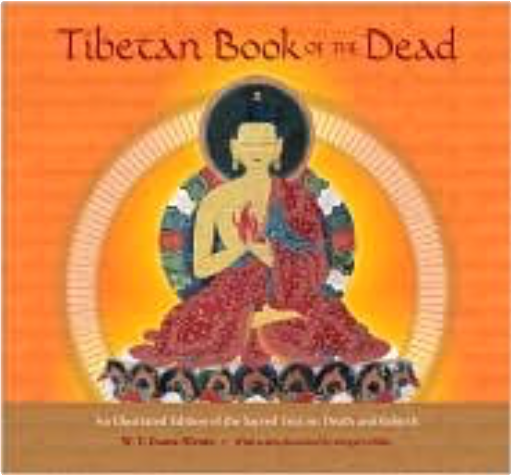The Best Translation Of The Tibetan Book Of The Dead article we provide is expected to provide useful information for you, all of which we have summarized well.

Best Translation of the Tibetan Book of the Dead
As a seasoned Tibet enthusiast, I have always been fascinated by the profound wisdom enshrined within the Tibetan Book of the Dead. Throughout my journey of spiritual exploration, various translations of this sacred text have guided me. Among the many, two stand out as exceptional and deserving of mention.
The renowned “Bardo Thodol: A Tibetan Book of the Dead” by Francesca Fremantle and Chogyam Trungpa is a classic for its accuracy and depth. Fremantle’s masterful translation captures the essence of the Tibetan text, providing clear and accessible language that resonates with contemporary readers. Trungpa’s commentary adds invaluable insights, enriching the understanding of the text’s profound teachings on death, rebirth, and the nature of the mind.
The Significance of the Tibetan Book of the Dead
The Tibetan Book of the Dead, also known as the “Bardo Thodol,” is a revered spiritual text that guides individuals through the transition of death. It is believed to have been composed in the 8th century by Padmasambhava, a renowned Buddhist master. The text provides instructions and insights for navigating the various stages of the afterlife, known as the bardos, which include the moment of death, the intermediate state between lives, and the journey towards rebirth.
The Tibetan Book of the Dead serves as a spiritual map, offering guidance and solace to those facing the inevitable passage of death. It emphasizes the importance of mindfulness, compassion, and the cultivation of wisdom as essential tools for navigating the challenges of the afterlife. Its teachings have deeply influenced Buddhist practices and continue to inspire seekers of spiritual truth.
Modern Interpretations of the Tibetan Book of the Dead
In addition to the classic translation by Fremantle and Trungpa, there have been several other notable interpretations of the Tibetan Book of the Dead. These translations offer fresh perspectives and interpretations of the text, adapting it to the needs and sensibilities of contemporary readers.
“The Tibetan Book of the Dead: A New Translation” by Robert Thurman is noteworthy for its scholarly rigor and accessible language. Thurman draws upon his expertise in Tibetan language and Buddhist philosophy to present a comprehensive translation that is both accurate and engaging. His commentary provides historical and cultural context, enhancing the reader’s understanding of the text.
Modern Interpretations of the Tibetan Book of the Dead
In addition to the classic translation by Fremantle and Trungpa, there have been several other notable interpretations of the Tibetan Book of the Dead. These translations offer fresh perspectives and interpretations of the text, adapting it to the needs and sensibilities of contemporary readers.
“The Tibetan Book of the Dead: A New Translation” by Robert Thurman is noteworthy for its scholarly rigor and accessible language. Thurman draws upon his expertise in Tibetan language and Buddhist philosophy to present a comprehensive translation that is both accurate and engaging. His commentary provides historical and cultural context, enhancing the reader’s understanding of the text.
Practical Applications of the Tibetan Book of the Dead
Beyond its spiritual significance, the Tibetan Book of the Dead offers practical applications that can be incorporated into daily life. Its teachings on mindfulness, impermanence, and the nature of suffering can help us cultivate a more meaningful and fulfilling existence.
By embracing the principles outlined in the Tibetan Book of the Dead, we can learn to live with greater awareness, compassion, and acceptance. Its wisdom encourages us to confront our fears and anxieties surrounding death and to embrace the impermanence of life as an opportunity for growth and transformation.
Tips for Exploring the Tibetan Book of the Dead
For those interested in delving deeper into the teachings of the Tibetan Book of the Dead, here are some tips to enhance your understanding:
- Start with a reliable translation: Choose a translation that is clear, accurate, and resonates with your sensibilities.
- Read with an open mind: Approach the text with an open and receptive mind, allowing its teachings to challenge and inspire you.
- Consider seeking guidance: If possible, seek the guidance of a qualified teacher or mentor who can provide insights and support.
Frequently Asked Questions about the Tibetan Book of the Dead
Here are answers to some common questions about the Tibetan Book of the Dead:
- Q: What is the purpose of the Tibetan Book of the Dead?
- A: The Tibetan Book of the Dead is a spiritual guide that provides instructions for navigating the afterlife and cultivating spiritual growth.
- Q: Who wrote the Tibetan Book of the Dead?
- A: The Tibetan Book of the Dead is attributed to Padmasambhava, a renowned 8th-century Buddhist master.
- Q: Is the Tibetan Book of the Dead only for Buddhists?
- A: While rooted in Buddhist teachings, the Tibetan Book of the Dead has universal themes that resonate with people from all backgrounds.
Conclusion
The Tibetan Book of the Dead is a profound spiritual text that offers invaluable insights into the nature of life, death, and the human condition. Whether you are a seasoned practitioner or a curious seeker, exploring this sacred text can deepen your understanding of the world and inspire you to live a more meaningful and fulfilling life.
If you are interested in learning more about the Tibetan Book of the Dead, I encourage you to visit this website for further resources and guidance. Remember to always consult reputable sources and seek the advice of qualified teachers when delving into complex spiritual texts.

Image: www.astropop.com
You have read Best Translation Of The Tibetan Book Of The Dead on our site. Thank you for your visit, and we hope this article is beneficial for you.